As if wasps, caterpillars, beetles, scorpions, ants, peacock spiders, mantids, and crabs weren’t enough, Bandai recently (early 2023) added a set of ladybugs (lady beetles) to add to their growing collection of arthropods in the Diversity of Life on Earth (DoLoE) line. And the set is part of their ‘Advanced’ line, which means better and more refined sculpts, better paint, and yes, of course, they are more expensive. When I first heard this set was coming, I assumed they would pick a common and familiar species and do multiple color variants of it. I was surprised to see four different species. Not only that, the four sculpts are original; they didn’t make a generic ladybug mold and just paint it four different colors. I was initially only going to get the two more rarely-made species, but when I found out the models were only 5.5-6.0 cm, I decided to get the whole set (plus Coccinellidae is a favorite group of insects of mine). Mine came assembled, but they legs probably can come off. There are articulations at the base of the prothorax-mesothorax, base of the head-prothorax, base of each leg, and the tibial-femoral juncture of each leg. The elytra can open to reveal flying wings if desired (more on that in a sec). The paint for each is very well done, both dorsally and ventrally, and even the tarsal pads are individually painted.
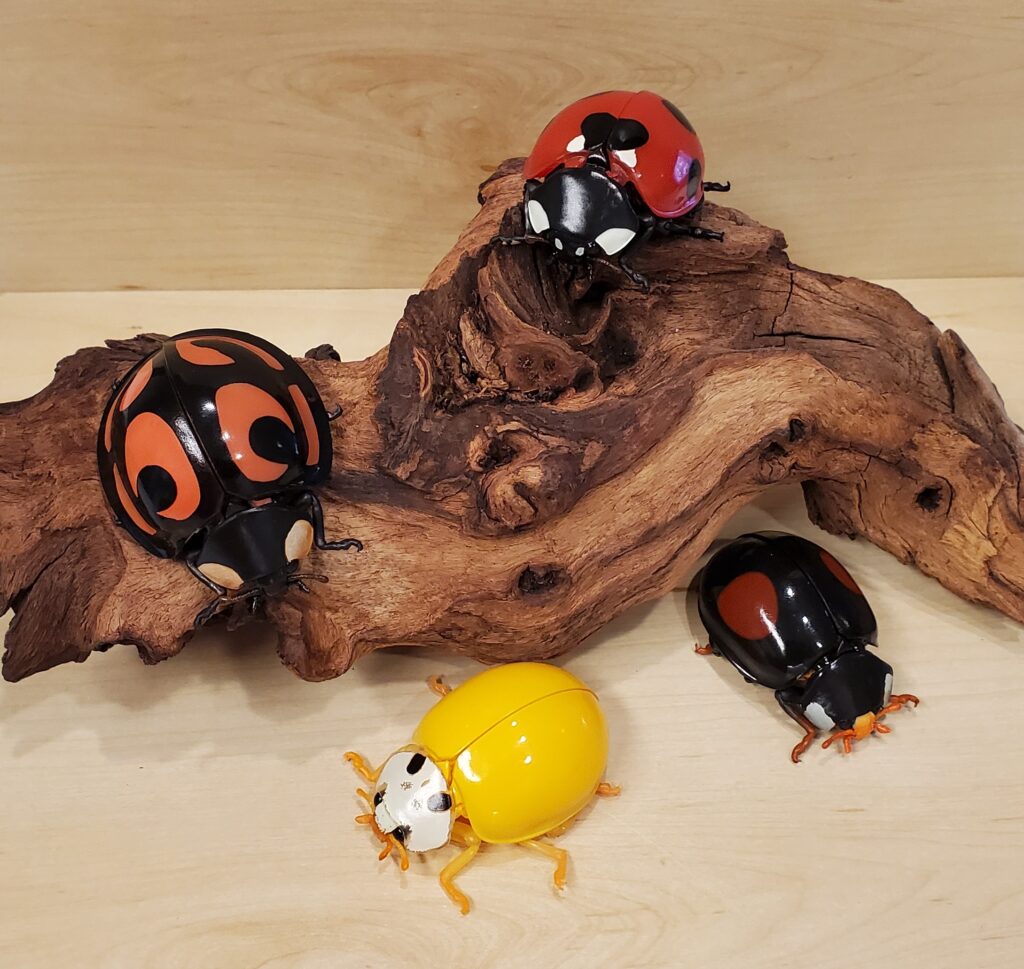
All four figures have the option to be displayed with their wings open and propped up on a base derived from the original gashapon capsule. I won’t be displaying mine this way for space considerations, but this next image gives the reader an example of how the presentation would look.
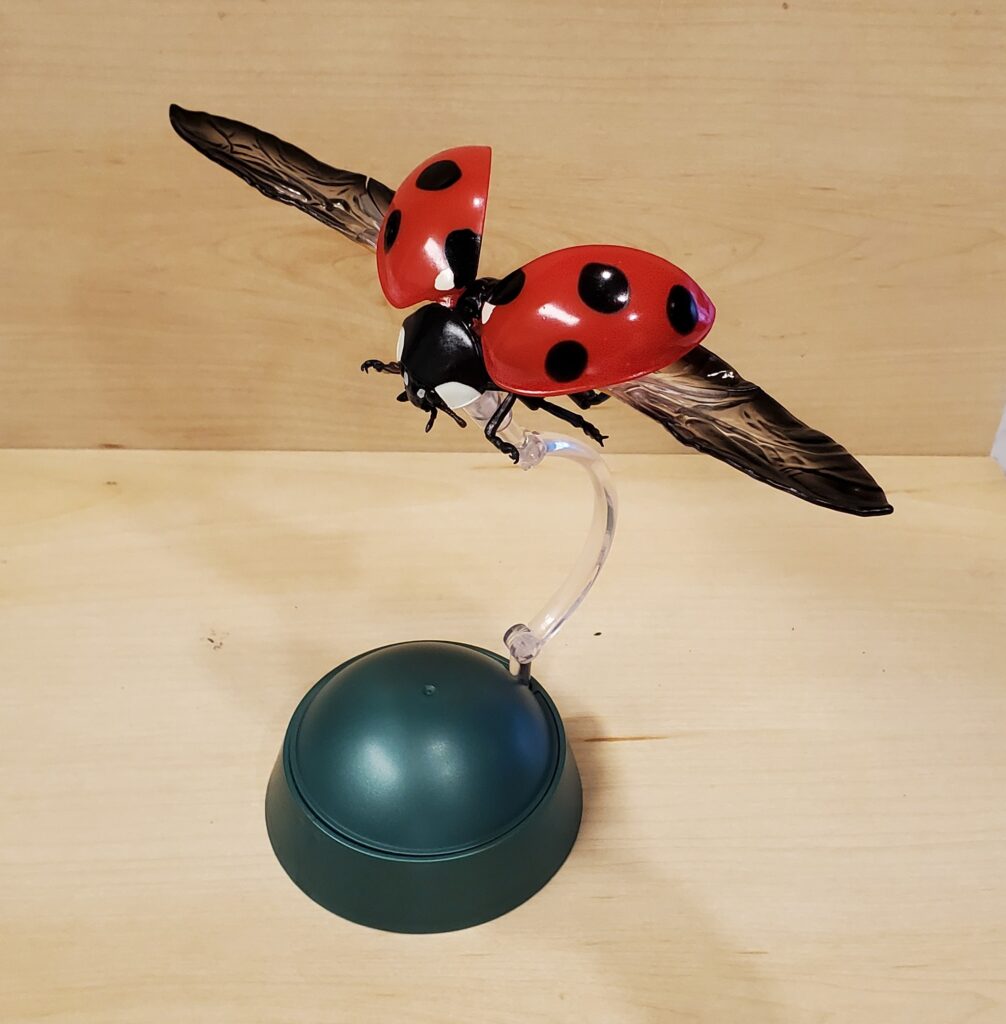
On to individual species:
We’ll start with the seven-spotted lady beetle, Coccinella septempunctata, which is probably the most commonly made species of beetle that isn’t in the superfamily Scarabaeoidea. The species is naturally widely distributed throughout the Palearctic, but has been introduced elsewhere, most notably North America and South Africa. In North America it is displacing native species, such as the similar nine-spotted lady beetle (C. novemnotata). This Bandai figure has a body length of approximately 5.5 cm for a scale of 8.5:1-7:1. This is the only figure is the set I will display with its wings open (but not on its base, for spacial considerations). I have several other figures of this species by other brands (Blip Toys, Bullyland, CollectA, Furuta, Heller, Kabaya, Kitan Club, Papo, Stasto 3D File) so displaying one with its wings open will add some variety to the collection!
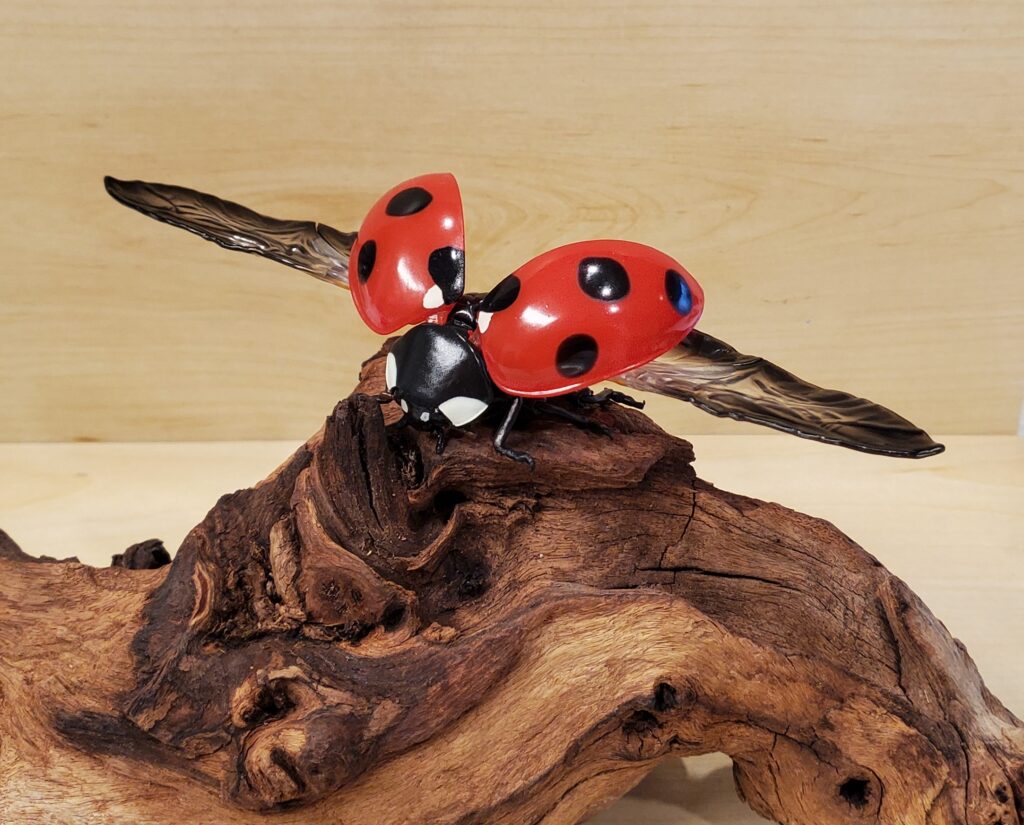


Next up is another invasive species, the multi-colored Asian lady beetle (MALB), Harmonia axyridis. Native to East Asia and Japan, it is now naturalized throughout much of North America, Central America, South America, Europe, Israel, and South Africa. It’s another species that has become a prominent component of the North American lady beetle fauna, most certainly at the detriment of some native species. The figure has a body length of approximately 5.7 cm for a scale of 11.4:1-7.1:1. In nature, H. axyridis is extremely variable in terms of color, and Bandai decided to go with the red-spotted black morphotype. Bandai could have easily released a set of only H. axyridis, highlighting multiple color forms. Other, smaller, figures of this species have been produced by Kaiyodo and Kitan Club.
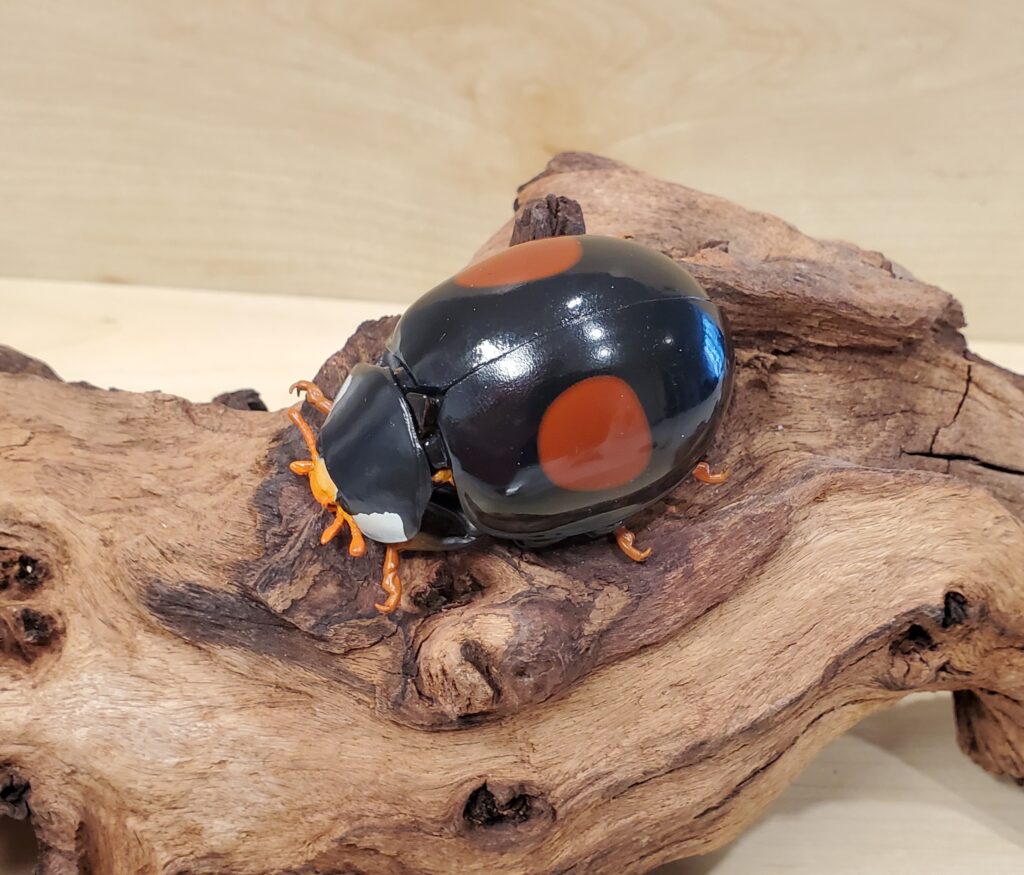
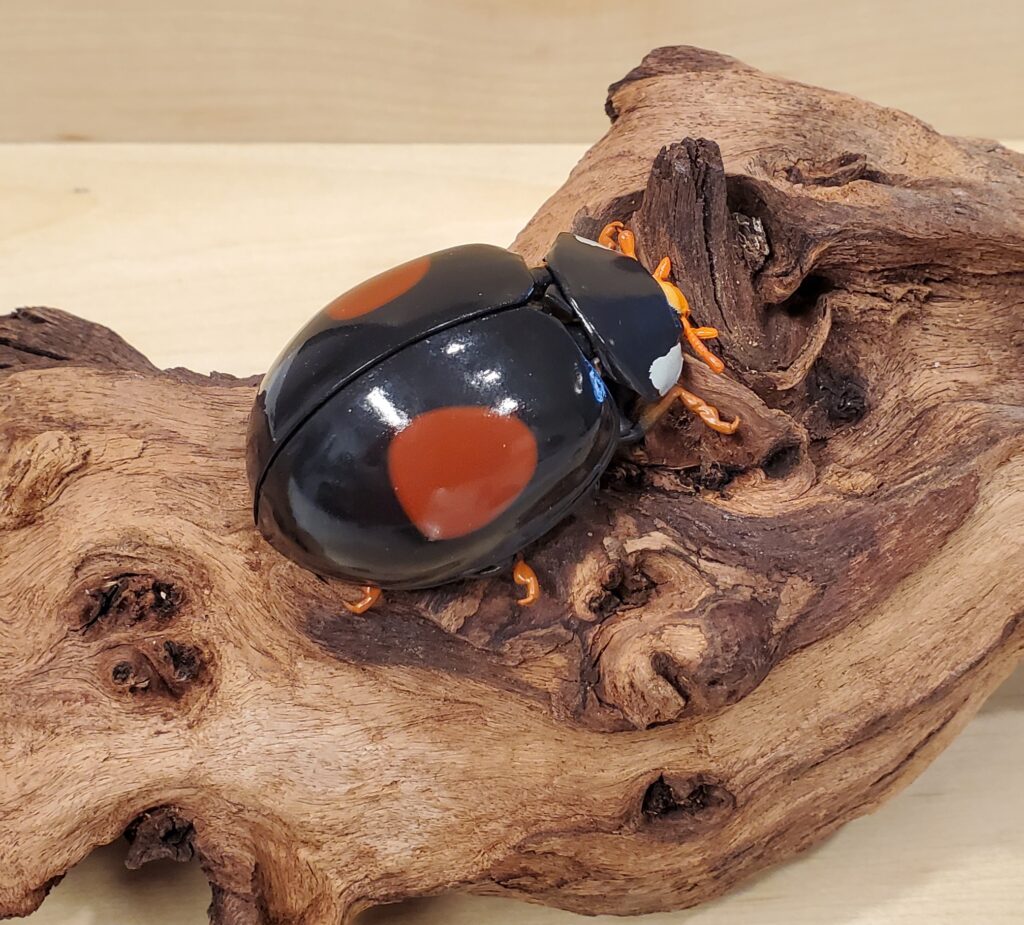
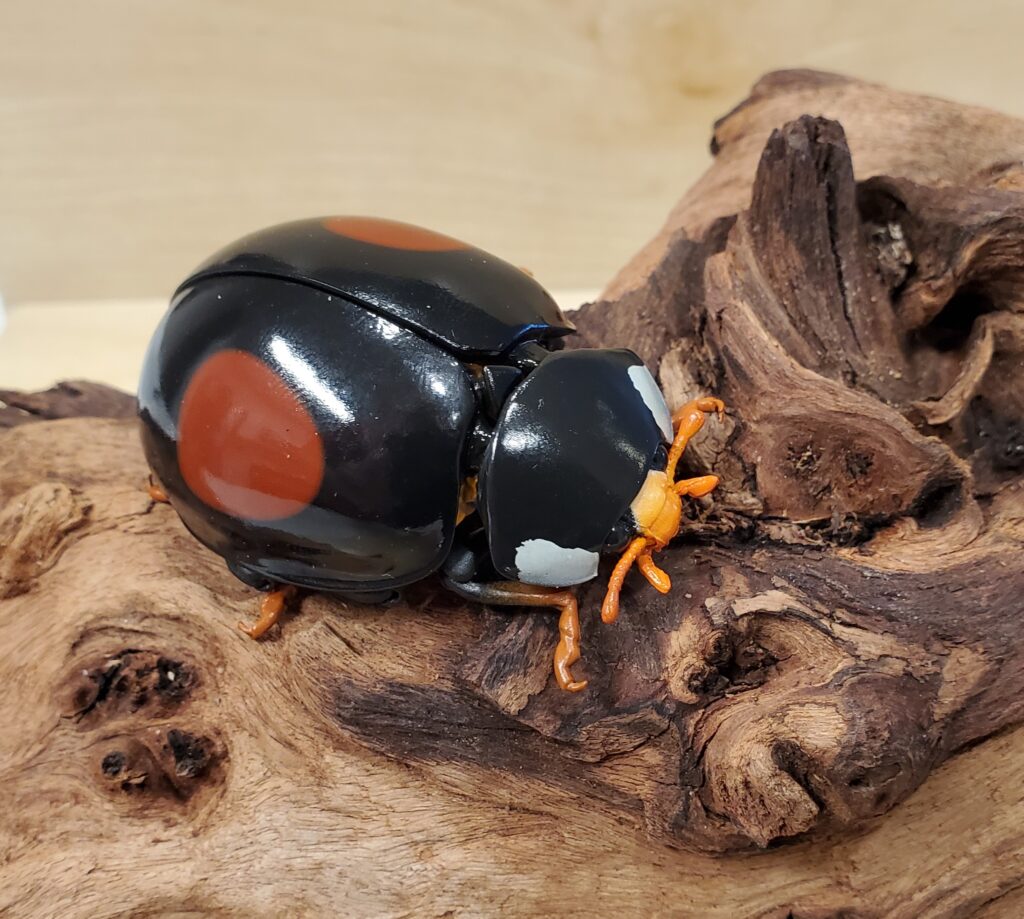
Our next lil’ lady is the yellow lady beetle, Illeis koebelei. This species is native to East and Southeast Asia and Japan. Unlike many lady beetles which feed on soft-bodied insects such as aphids and scales, I. koebelei feeds on fungi such as powdery mildew, which is a pest of ornamental plants, vegetable crops, and orchard trees. The figure has a body length of approximately 6.0 cm for a scale of 13.3:1. Other figures of this species were made by Kitan Club and Stasto 3D File.
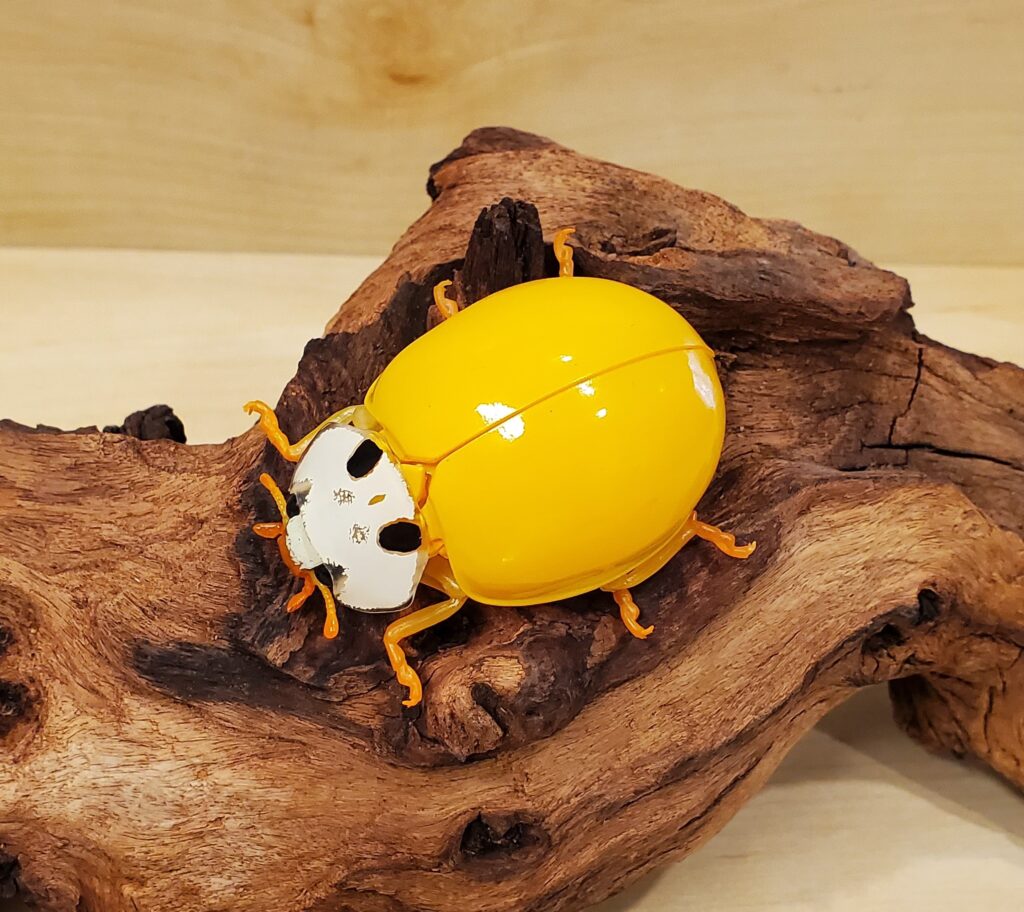

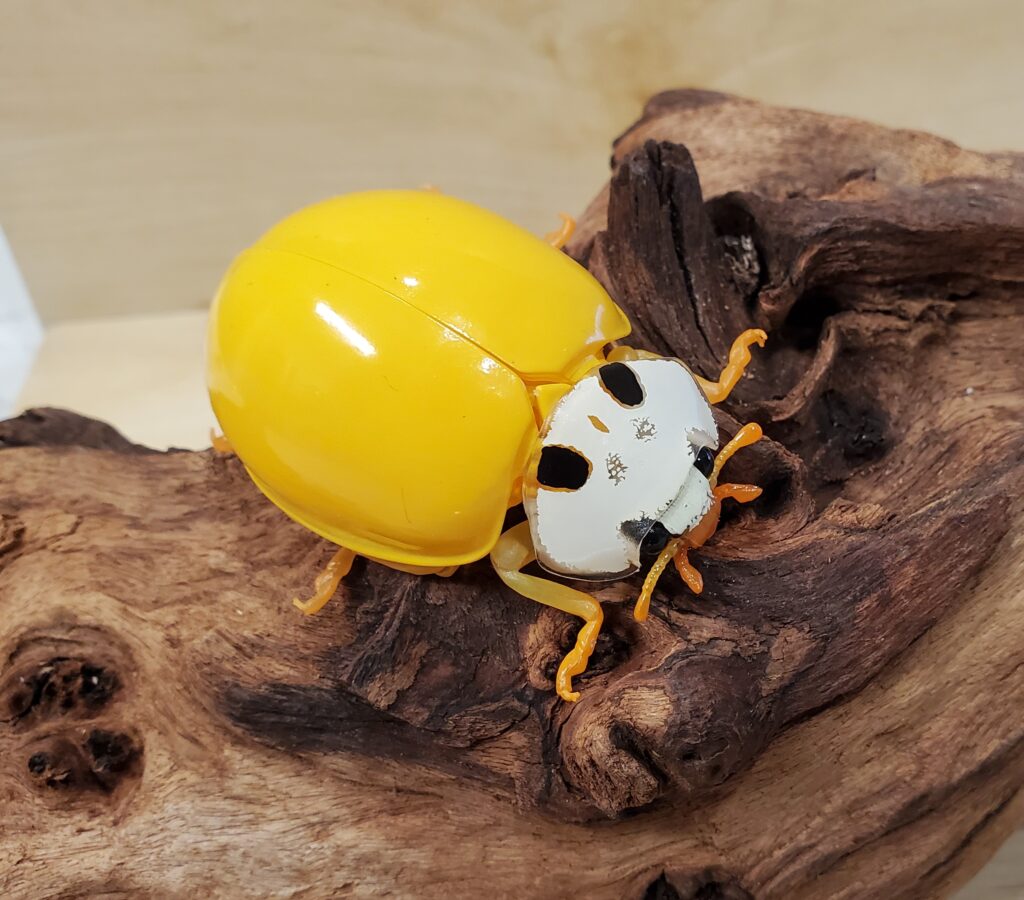
The fourth and final species, and the one I was most excited for, is Aiolocaria hexaspilota. This large and colorful species occurs in Central and East Asia, from northern India and the Himalayas east to southern China, Taiwan, the Korean Peninsula, and Japan. Larvae and adults of A. hexaspilota are specialized predators on larvae of chrysomelid beetles. Today’s figure measures approximately 6.0 cm for a scale of 4.6:1. The only other figure of this species I am aware of is by Stasto 3D File, and that model only came out in 2022.

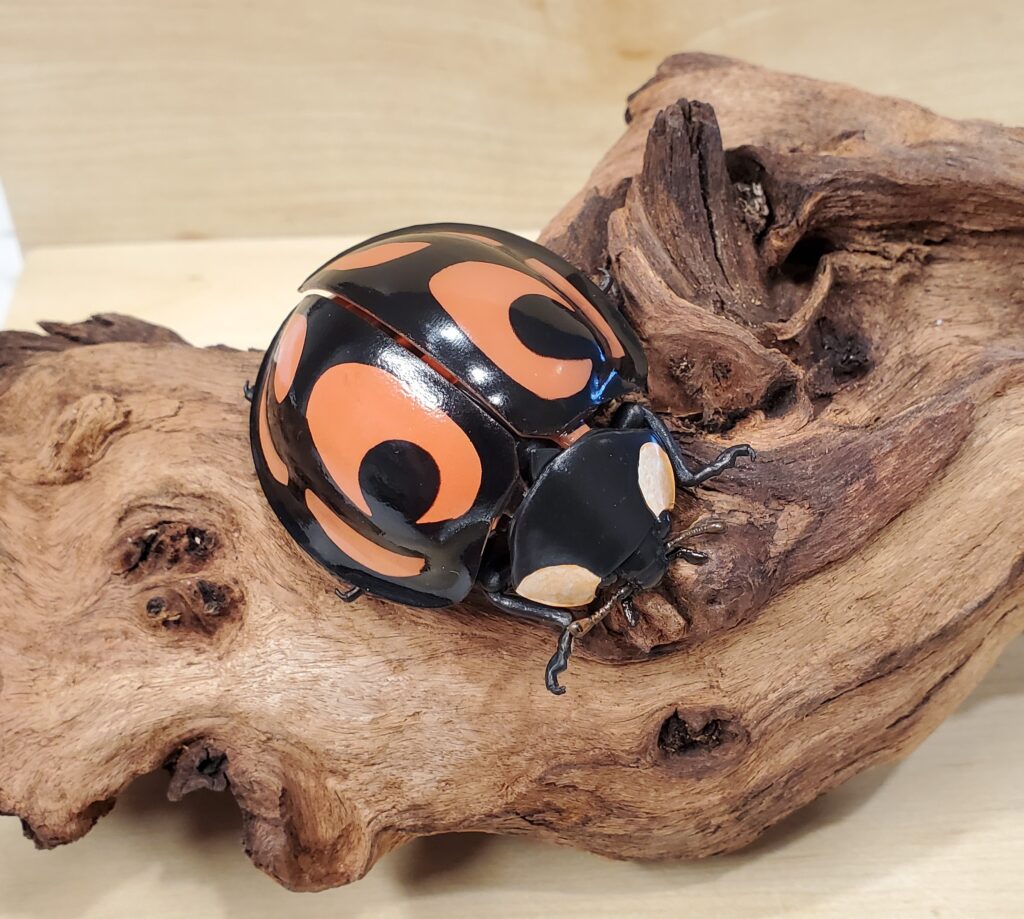

Overall, this is a fantastic set of beetles, especially for collectors interested in interesting and unusual taxa. They are smaller than many DoLoE figures; however, because of accessibility issues (might be hard to get outside of Japan), possible assembly, articulations, and, of course, cost, they are probably not for everyone. Like most DoLoE figures, these are models for serious collectors and not toys to be played with.
Disclaimer: links to Ebay and Amazon on the AnimalToyBlog are affiliate links, so we make a small commission if you use them. Thanks for supporting us!




Outstanding! Was looking forward to this review.
Usually I only see the invasive ladybugs around. It chaps my arse that you can literally go on Amazon and buy live ladybug larvae to introduce to your yard. Anyway, last summer I found a couple Chilocorus stigma and was absolutely thrilled about it.
Thank you! Glad you enjoyed it!